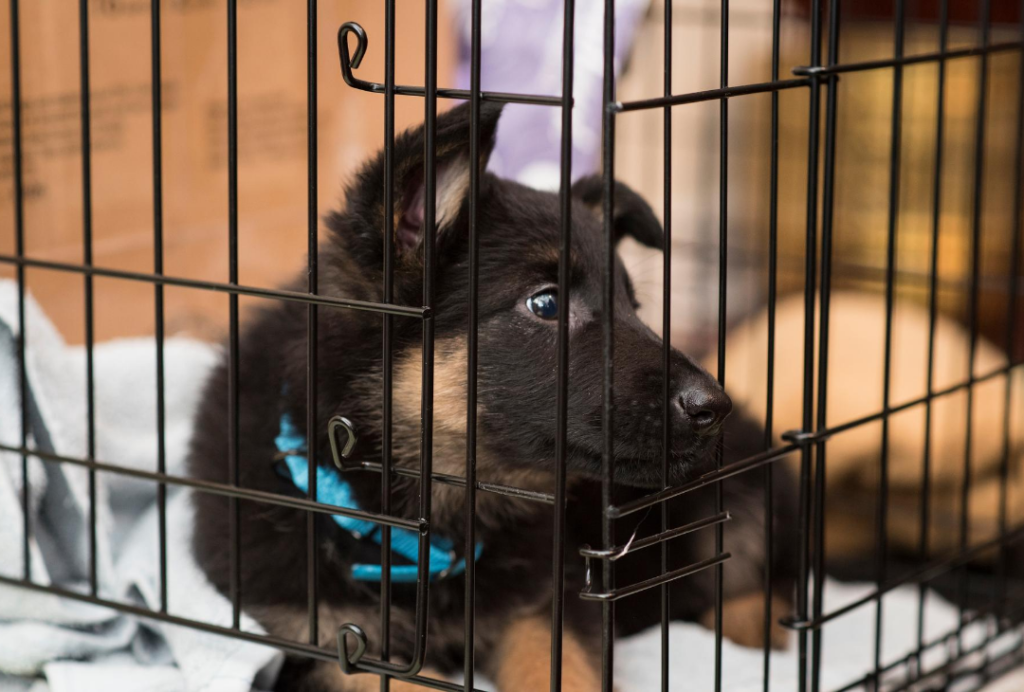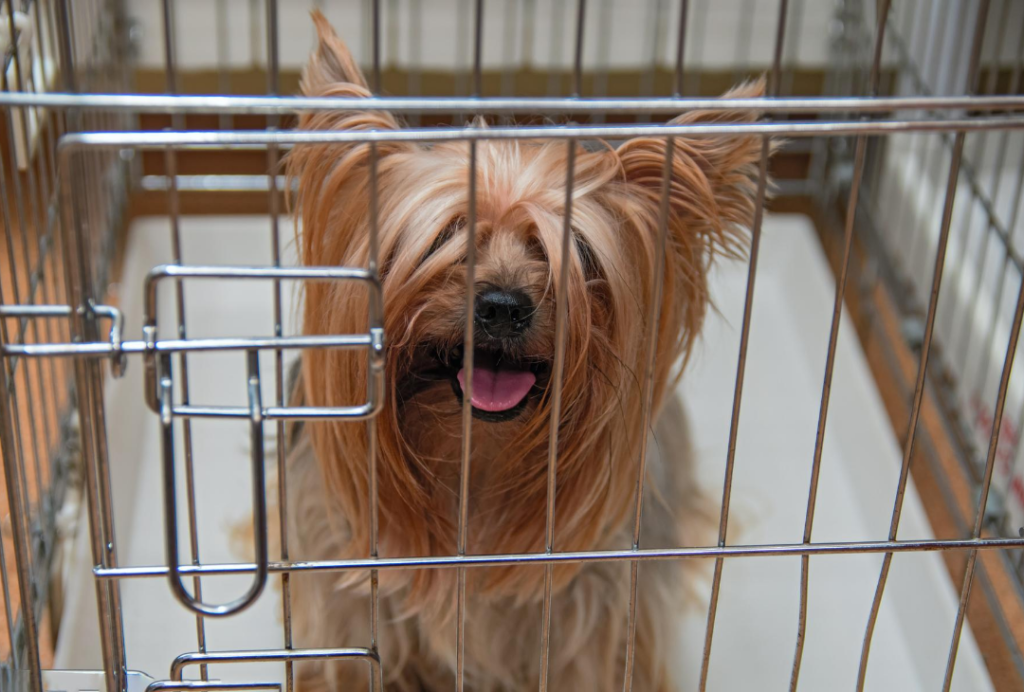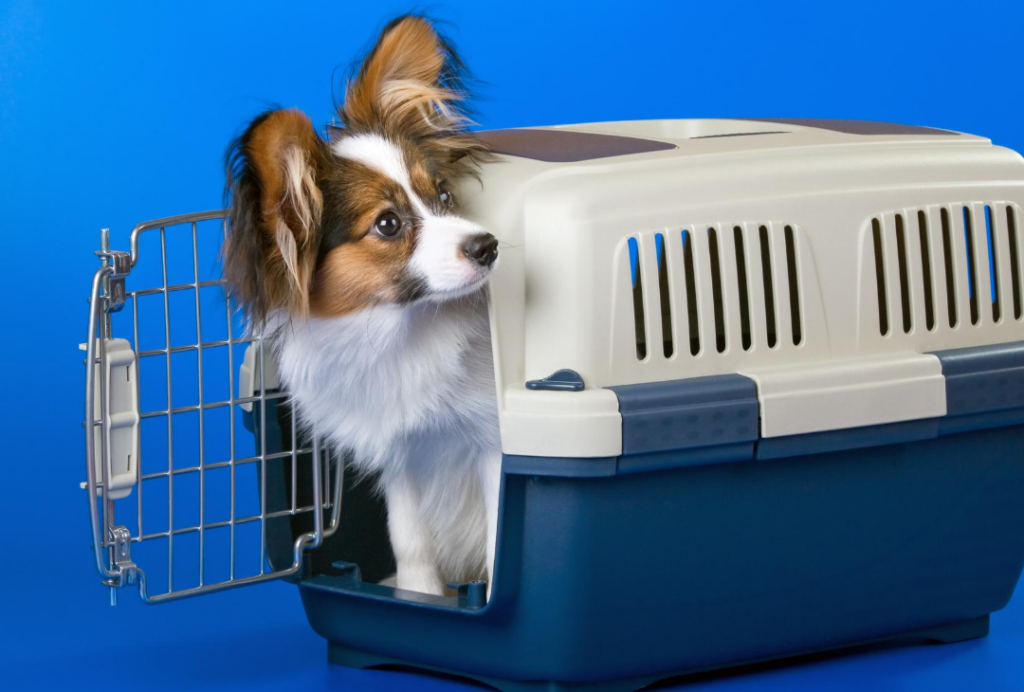Crate Training Basics: All You Need to Know

There are many reasons why people opt for crate training their pets. Some want to limit their new pup’s access to certain areas of the house, while others want to leave their dog in the crate when they aren’t home.
Is crate training worth the time and effort?
Most agree that it absolutely is!
With a crate, you’re providing your dog a safe and comfortable space to retreat to by catering to his natural instinct to seek a safe, quiet, and comfortable space. Using a crate comes in handy while you’re housetraining a pet.
In this article, we’ll tell you everything you need to know about crate training your pooch.
Let’s begin!
Some Advantages: Why Crate Training?
Crate training does not mean confining or punishing your pet!
It’s a great tool to keep you and your pooch safe and comfortable at all times. Let’s take a look at some advantages of crate training.

1. Helps With Housetraining
Puppies don’t know what they can and can’t do. While you’re training your new fur buddy to live in a house, using a crate can be a great way to contain damage to a specific area of your house.
What’s more, is that you don’t have to worry about your furry friend finding trouble when he’s in his crate. So, you’ll be able to relax knowing he’s safe.
2. Easy to Transport
Your dog will inevitably need to ride in the car. Crates are one of the safest ways to transport your pet and ensure safety. They also help minimize your pooch’s chances of getting car sick.
Moving on.
3. Thunderstorm Shelter
Sometimes, your dog will need to seek refuge, and for that, it’s nice to have a safe and comfortable space to retreat to.
So, if your dog doesn’t want to be around people or is afraid of the thunderstorm’s noise, he’ll feel safe and comfortable in his crate–even if you aren’t home.
4. Prevents Accidental Injuries
We have many hazardous things in our home that can injure your pooch. You can’t take your dog along with you everywhere you go. So, you’ll have to leave him in a safe and comfortable place.
A crate provides just that.
Your dog won’t find his way into your pantry to find foods that may not be safe for him–he won’t chew on electric chords, either!
5. Keeps Your Things Safe
My dog ate my homework!
While generations may have abused that statement, there’s something believable about it. Dogs do like to get their paws on important things and destroy them. .
Your dog might mistake your expensive laptop charger for a chew toy, which will cost you money to replace. He could also get curious about what’s inside your couch.
The opportunities for destruction are limitless.
By training your pooch, you can be assured that your things are safe.
Things to Keep in Mind When Crate Training Your Pooch
You need to keep a few important points in mind if you’re planning on crate training your furry friend.

Take a look.
1. Crate Training is NOT Punishment
Was your puppy being naughty?
Sending your pooch to the crate for a time out is the last thing you’d want to do! Your dog should never associate his crate with punishment or something unpleasant.
Instead, the crate should be his sanctuary–a place he can retreat to and feel comfortable in.
2. Keep Up the Reinforcement
Make sure to keep rewarding your pooch whenever he voluntarily goes into the crate. This will form a positive association. In times of distress, your pooch will always find safety and refuge in his crate.
3. You Shouldn’t Leave Your Dog in the Crate for Too Long
Leaving home for your 9 to 5 job?
In that case, leaving your pet in the crate isn’t the best idea. Dogs are social beings that have activity needs. Leaving your pooch in the crate all day and all night will cause depression and anxiety.
Some may even develop destructive behaviors.
So, you should look into hiring a pet sitter or signing your dog up for daycare if you’re going to be out of the house.
4. Puppies and Crate Training
Puppies have small bowels and bladders and need to relieve themselves more often. So, you shouldn’t leave your puppy in his crate for more than three to four hours without a break.
5. Slow But Sure
You should crate train your pooch until you are be able to leave him alone without destructive behaviors or accidents.
So, you’ll need to go slow when it comes to trusting your dog with your home.
How it works is that you start trusting your dog with enclosed areas–like the bedroom or living room and slowly increase his access to the full house. Don’t jump in with both feet!
In Conclusion: Crate Training Basics

Did we cover everything you needed to know about crate training your dog?
Crate training is an excellent tool at your disposal, and it goes beyond just housetraining your new puppy. It has many advantages and helps turn your pup into a responsible and trustworthy canine citizen.
Would you be crate training your dog? Tell us what you think in the comments section.
